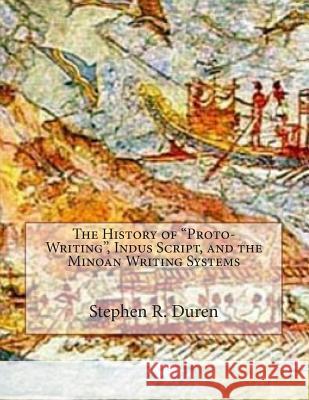The History of "Proto-Writing", Indus Script, and the Minoan Writing Systems » książka
The History of "Proto-Writing", Indus Script, and the Minoan Writing Systems
ISBN-13: 9781492890775 / Angielski / Miękka / 2013 / 156 str.
The History of "Proto-Writing", Indus Script, and the Minoan Writing Systems
ISBN-13: 9781492890775 / Angielski / Miękka / 2013 / 156 str.
(netto: 152,88 VAT: 5%)
Najniższa cena z 30 dni: 150,11 zł
ok. 13-18 dni roboczych
Dostawa przed świętami

Darmowa dostawa!
Scientist Stephen R. Duren from the University of South Florida presents recent novel findings of monumental importance pertaining to Sanskrit artifacts located in various museums around the world. The reason as to why a Scientist has written a book about Sanskrit archaeology and history is as follows; After confirmation from precise spelling and accurate descriptions of known Sumerian and Hindu deities, precise phonetic spelling of proper names of known civilizations, a comparison to known alphabets, a technical analysis of the Sanskrit language, and obvious embellishments serving as confirmation of various common words such as a picture of a rose next to the word rose, a reed next to the word reed, a moon next to the word moon, a sun with bird face next to a word that means both sun and bird, a man carrying bags next to the word bag-carrier, a vegetable next to the word vegetable, etc.: the ancient writing system of Indus Script, which is thought to have existed circa 1,700-3,000 BCE, has been fully deciphered and the language is the known ancient Sanskrit language. And so, thousands of Indus Script inscriptions have been translated into Sanskrit and then into English, and the most entertaining and historically significant inscriptions have been added into this book, which is meant to be an easy to read and entertaining instruction manual for the reader to learn how to read Indus Script, and by doing so; the reader will gain insight into this exciting time period of the ancient world and the culture of this highly advanced civilization. Although these finding may sound fantastical; the decipherment is presented with overwhelming supporting evidence. Once the reader learns the basics of Indus Script in Chapter 1, the reader will then go on to read a more difficult and older style of Indus Script, which dates back to 3,500 BCE in the Indus Valley city of Harappa (currently thought to be "proto-writing"). And so, as one would imagine: the oldest phonetic writing...











